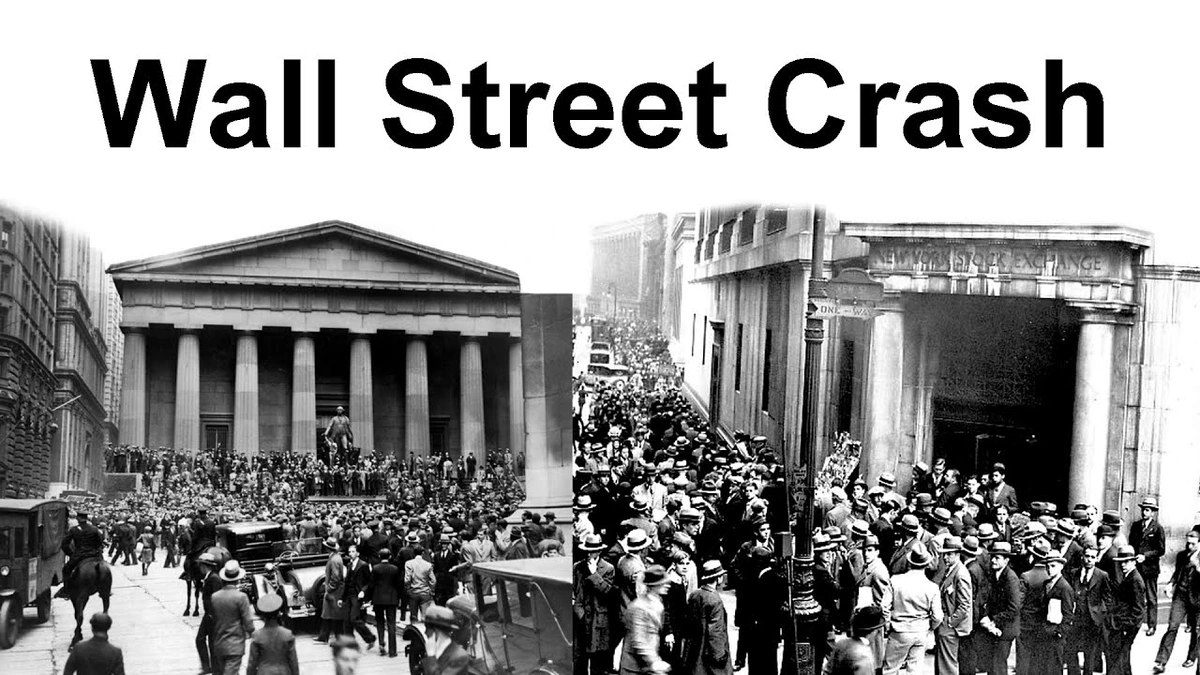The Wall Street Crash 1929. The name itself conjures images of utter financial devastation. Breadlines, bank runs, and fortunes vanishing overnight. But it wasn’t just a historical event; it was a brutal lesson in market psychology, risk management, and the perils of unchecked speculation. Let’s be honest, history doesn’t repeat, but it often rhymes. What can we learn from this infamous period, especially when navigating today’s volatile market?
Understanding the Roaring Twenties Before the Fall

Before we dive into the crash itself, it’s crucial to understand the context. The 1920s were a period of unprecedented economic growth in the United States – a time of flappers, jazz, and seemingly limitless prosperity. Mass production, fueled by innovations like the assembly line, led to a surge in consumer spending. The stock market became the hottest game in town, attracting everyone from seasoned investors to ordinary folks eager to get rich quick. A common mistake I see, is that people think the market will keep going up forever. But here’s the thing: this created a fertile ground for speculation and ultimately, a bubble.
The widespread use of margin buying – borrowing money to purchase stocks – amplified the risks. Investors could control large positions with a relatively small amount of their own money, magnifying both potential gains and losses. What fascinates me is how similar this sounds to certain aspects of today’s market, with its easy access to leverage and the allure of quick profits through meme stocks and crypto. But remember, easy money rarely lasts.
Black Thursday and the Cascade of Panic
The cracks began to appear in October 1929. On October 24th, known as Black Thursday, the market experienced a significant downturn. Panic selling ensued as investors rushed to unload their shares. Major banks attempted to stabilize the market by buying up stocks, but their efforts proved futile. Here’s the thing, confidence, once lost, is incredibly hard to regain.
The following Monday, October 28th, saw even steeper losses. And then came Black Tuesday, October 29th, the day the bottom truly fell out. A staggering 16 million shares were traded, and the market plunged to unprecedented depths. Fortunes evaporated in a matter of hours, and the stock market crash sent shockwaves through the entire economy. I initially thought this was straightforward, but then I realized it was the start of a domino effect that had devastating consequences for years to come.
Key Lessons from the 1929 Crash
So, what lessons can we glean from the 1929 Wall Street Crash? Here are a few that remain highly relevant today:
- Beware of Market Bubbles: Unusually rapid growth, fueled by speculation and irrational exuberance, is a classic warning sign. Pay attention to valuations and underlying fundamentals. As per the guidelines, unsustainable growth always corrects itself.
- Understand Leverage: Using borrowed money to invest can amplify gains, but it also magnifies losses. Be cautious and understand the risks involved.
- Diversify Your Investments: Don’t put all your eggs in one basket. Spreading your investments across different asset classes can help mitigate risk.
- Have a Long-Term Perspective: Don’t get caught up in short-term market fluctuations. Focus on your long-term financial goals and invest accordingly.
- Control Your Emotions: Fear and greed can drive irrational decision-making. Stick to your investment strategy and avoid panic selling during market downturns.
The Aftermath | The Great Depression
The 1929 crash didn’t just wipe out investors; it triggered the Great Depression, a decade-long period of economic hardship that affected the entire world. Banks failed, businesses closed, and unemployment soared. People lost their homes, their farms, and their livelihoods. But, the government stepped in and introduced a range of policies to address the crisis, including the establishment of the Securities and Exchange Commission (SEC) to regulate the stock market and protect investors. According to Wikipedia , the reforms changed the system.
Let me rephrase that for clarity: the Depression highlighted the importance of government intervention in stabilizing the economy and providing a safety net for those in need.
Today’s Market | Echoes of the Past?
Are there parallels between the 1920s and today’s market? Some analysts argue that the current environment, with its low interest rates, easy access to credit, and speculative investment trends, shares some similarities. The rise of cryptocurrencies, meme stocks, and special purpose acquisition companies (SPACs) has fueled a sense of excitement and, perhaps, excessive risk-taking.
However, there are also significant differences. Regulatory oversight is much stronger today than it was in the 1920s. Financial institutions are generally more resilient. And the economy is more diversified. But remember, it’s best to keep checking the official portal. As per the guidelines mentioned in the information bulletin, due diligence is key.
That moment of panic when the market dips. We’ve all been there. Let’s walk through this together, step-by-step, so you can get back to focusing on what really matters: your financial well being.
So, what does it all mean? The 1929 Wall Street Crash serves as a stark reminder of the importance of prudent investing, risk management, and a healthy dose of skepticism. While history may not repeat itself exactly, understanding the lessons of the past can help us navigate the challenges and opportunities of the present. The economic impact of the crash was devastating. Understanding how the stock market works is important.
Check out more information here . And for a different topic, you can find some on this site .
FAQ Section
What caused the Wall Street Crash of 1929?
A combination of factors, including overspeculation, margin buying, and an unsustainable economic boom.
How did the crash affect the average person?
It led to widespread unemployment, poverty, and hardship during the Great Depression.
What regulations were put in place after the crash?
The Securities and Exchange Commission (SEC) was established to regulate the stock market and protect investors.
Can a similar crash happen again?
While regulatory safeguards are stronger today, market bubbles and economic downturns are still possible. Prudence and risk management are always essential.




